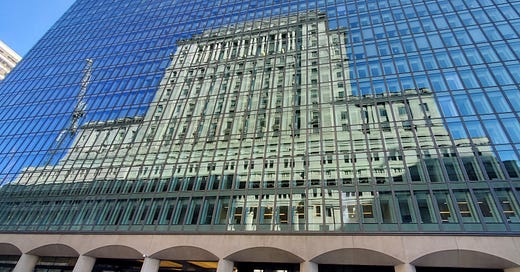The land Shaw is seeking to rezone was valued between $160 and $270 million as of 2019—12 times the amount in Shaw’s $13 million endowment and four times its annual $41 million budget.
Shaw is a predominantly black university in downtown Raleigh, North Carolina—in fact, “the South’s oldest historically Black university.” And it is—like some homeowners who’ve watched their houses grow in value but have nowhere to go—land-rich but cash-poor.
This is something many colleges are facing, given their essentially low-to-moderate density sprawling campuses and troubles in higher education. My own college is considering selling off a portion of its famous forest preserve for financial reasons.
This bit from a student is interesting, especially the second paragraph:
Prior to enrolling in divinity school, Dixon studied psychology and worked in housing. She’s currently researching the psychological impact of people who are displaced from their community because of gentrification.
She’s intrigued by statements the university has made about how it could bring in more grocery stores or Black- and Latino-owned businesses, but worries that making the area “more attractive” could result in the displacement she’s seen elsewhere.
That’s the crux of it, isn’t it? How do you prevent improvements to a neighborhood from raising costs?
There are a lot of threads here. Give it a read.
The first practical pneumatic tyre was made in 1887 by John Boyd Dunlop, a Scottish veterinarian, for his son’s bicycle. Dunlop founded the Dunlop Pneumatic Tyre Co. Ltd in 1889 to market this bicycle tyre. The detachable pneumatic tyre was introduced in 1891 by Édouard Michelin. This was also a bicycle tyre. Like many motorcar brands (Rover, Peugeot etc.) Dunlop and Michelin were bicycle brands before they were car brands.
Just one of several very interesting bits of history, which suggest that in a lot of ways the car descended from the bicycle as much as from the carriage. I suspect most people don’t know this history. Check it out.
Funny Business, The Baffler, Rachel Wilkinson, July 2023
Walker comes by his ideas about authenticity honestly—at least as they relate to themed entertainment—and some have been percolating for decades. Authentic reality is a new way of thinking about engaging an increasingly sophisticated audience. First and foremost, it’s not a brand or branding. Such is the failure of the kind of commercial thinking that Walker sees as anathema to the attraction-experience, where the parks’ corporate masters ask visitors “to look past the obvious branding in the hopes that we can fool them into thinking that they’re getting an authentic experience.”
This piece is about theme parks and other entertainment venues, and the sort of paradox of packaging and selling reality. It’s very interesting. So is this bit of economic analysis:
In the world of themed entertainment, the flip side of a perfectly realized authentic reality is the labor it takes to maintain it. A second prong of the new post-Covid normal that kept emerging at the trade summit: staffing shortages. Covid saw many temporary and seasonal attractions employees whom the industry relies on depart for more stable, year-round jobs. Retaining a largely temporary staff is a broader issue, though, as many of these employees don’t see a path to a permanent industry job with consistent pay increases. As one IAAPA member put it to me: “If you really want the churro lady to be there for twenty years, it needs to be a career.”
Springfield, N.J.: A Homey Place With Relatively Affordable Housing, New York Times, Kathleen Lynn, April 12, 2023
I always find these profiles of towns or neighborhoods interesting—I guess in the same way some of you who live in the places I write about find my pieces interesting.
“Although Springfield has a lower profile than neighboring towns like Summit and Westfield, many buyers like its homey feeling and relatively affordable home prices.”
All of these places were, to my parents and to my childhood self, traffic-choked and overcrowded. But not really. The article even mentions revitalization:
Township officials have been trying to revitalize the Morris Avenue shopping district by encouraging the construction of mixed-use retail and multifamily buildings. One mixed-use building recently opened near the corner of Morris and Mountain Avenues
I wonder how many people welcome this, including the people who have just newly arrived themselves. Certainly, downtowns or shopping districts are fitting places for new development. A lot of New Jersey towns look very much the way they probably did 50 or even 70 years ago. I kind of like that, but I also like a mix of new and old.
Related Reading:
Thank you for reading! Please consider upgrading to a paid subscription to help support this newsletter. You’ll get a weekly subscribers-only post, plus full access to the archive: over 700 posts and growing. And you’ll help ensure more material like this!



